Thyme Thymus vulgaris

ABOUT
Thymus vulgaris, commonly known as thyme, is a perennial herb with a bushy, woody base and square stems. The plant is well known for its aromatic leaves, which are small, oval to oblong in shape, and gray-green in color. These tiny leaves are arranged oppositely along the stem and are often densely packed, giving the herb a lush appearance. The foliage is somewhat fuzzy due to a fine layer of hairs covering each leaf. When crushed, the leaves release a strong, pleasant fragrance which is characteristic of the plant. During its blooming season, thyme produces small, two-lipped flowers that can range in color from white to pale purple. These blossoms cluster in whorls at the stem tips, creating a decorative effect atop the green foliage. Thyme flowers are highly attractive to bees and other pollinators, which are drawn to their sweet nectar. Overall, thyme has a low-growing, spreading habit, which can form a dense, ground-covering mat. Its appearance is both practical for culinary use, as the leaves are easily harvestable, and aesthetically pleasing for gardens, fitting well into rock gardens, borders, and as a fragrant ground cover. The timeless charm of thyme, coupled with its resilience and enduring scent, makes it a favored herb in many gardens around the world.
About this plant
 Names
NamesSynonyms
Common Thyme, Garden Thyme, English Thyme, French Thyme, Tomillo, Mother Thyme, Common Garden Thyme.
Common names
Thymus aestivus, Thymus angustifolius, Thymus banaticus, Thymus bracteosus, Thymus collinus, Thymus confertus, Thymus daenensis, Thymus debilis, Thymus difformis, Thymus eriocalyx, Thymus fallacinus, Thymus firmus, Thymus glabrescens, Thymus hirtus, Thymus illyricus, Thymus intermedius, Thymus leucostomus, Thymus magnus, Thymus mastichina, Thymus oligotrichus, Thymus praecox, Thymus pseudolanuginosus, Thymus serpyllum, Thymus sparsus, Thymus splendens, Thymus subarcticus, Thymus sylvestris, Thymus tenuifolius, Thymus vulgaris var. prostratus, Thymus webbianus, Thymus zygis, Origanum thymus.
 Toxicity
ToxicityTo humans
Thymus vulgaris, commonly known as thyme, is not considered toxic to humans when consumed in the small quantities typically used in cooking or as a seasoning. However, like many herbs, if consumed in very large amounts or in concentrated forms, such as essential oils, thyme could potentially cause adverse reactions. Thyme oil is very potent and should not be ingested as it can be toxic and may lead to symptoms such as dizziness, nausea, vomiting, or difficulty breathing. Nevertheless, normal dietary use of thyme as a herb is generally safe for most individuals.
To pets
Thymus vulgaris, commonly known as thyme, is generally considered safe for pets in small, culinary quantities. Ingesting small amounts of thyme is not likely to be harmful to cats or dogs. However, if a pet consumes a large amount of the plant or its essential oil, it may experience gastrointestinal upset, such as vomiting or diarrhea. As with humans, the essential oil of thyme is highly concentrated and can be toxic to pets, so it should never be given to them. Always exercise caution and consult with a veterinarian if there is any concern about a pet's exposure to herbs or essential oils.
 Characteristics
CharacteristicsLife cycle
Perennials
Foliage type
Evergreen
Color of leaves
Green
Flower color
Pink
Height
1 foot (30 cm)
Spread
1 foot (30 cm)
Plant type
Herb
Hardiness zones
5
Native area
Mediterranean
Benefits
 General Benefits
General Benefits- Culinary Uses: Thymus vulgaris, commonly known as thyme, is widely used as a culinary herb, enhancing the flavor of meats, soups, and stews.
- Aromatic Properties: It has a pleasant, pungent aroma, making it a popular choice for potpourris and sachets.
- Gardening: Thyme is valued as a drought-resistant, low-maintenance plant that can help in erosion control and can beautify rock gardens and landscapes.
- Pollinator Attraction: The flowers of thyme attract bees and other pollinators, which is beneficial for the ecosystem and helps in garden pollination.
- Companion Planting: When planted alongside other crops, thyme can help repel certain pests due to its strong scent, acting as a natural form of pest control.
 Medical Properties
Medical Properties- Antimicrobial: Thymus vulgaris, commonly known as thyme, has been found to have antimicrobial activities, helping to inhibit the growth of various bacteria and fungi.
- Antioxidant: It contains compounds that can act as antioxidants, helping to neutralize free radicals in the body.
- Antitussive: Used in traditional medicine, thyme can help relieve coughing, due to its components like thymol.
- Expectorant: Thyme may aid in thinning mucus, making it easier to cough up and clear from the respiratory system.
- Carminative: It is known to help reduce gas and bloating in the digestive system.
- Antispasmodic: Thyme has been used to alleviate muscle spasms, particularly those related to the cough reflex.
 Air-purifying Qualities
Air-purifying QualitiesThis plant is not specifically known for air purifying qualities.
 Other Uses
Other Uses- Thyme is often used as a natural insect repellent both indoors and in gardens.
- In the past, thyme was associated with courage, and knights would often carry sprigs of thyme as a sign of bravery.
- Thyme can be used to create an aromatic sachet that can be placed in drawers to keep clothes smelling fresh.
- It can be used as a natural dye, imparting a range of brown and green hues to wool and other natural fibers.
- The essential oil of thyme is sometimes used in aromatherapy for its invigorating and stress-relieving properties.
- Thyme is used in biodynamic farming practices to prepare compost and improve soil health with its antiseptic properties.
- When burned, thyme can release a pleasant fragrance, making it a natural way to freshen the air in a home.
- It is used in the stuffing of handcrafted herbal pillows, which are believed to promote restful sleep.
- In some cultures, thyme is associated with the fairy world, and planting it in a garden is said to attract these mystical beings.
- Thyme branches are sometimes used as a natural brush for basting meats during roasting, adding flavor while spreading oils or sauces.
Interesting Facts
 Feng Shui
Feng ShuiThyme is not used in Feng Shui practice.
 Zodiac Sign Compitability
Zodiac Sign CompitabilityThyme is not used in astrology practice.
 Plant Symbolism
Plant Symbolism- Courage: Thymus vulgaris, commonly known as thyme, has long been associated with bravery. In ancient times, it was believed that the scent of thyme gave courage to warriors before battles.
- Purity: Thyme has also symbolized purity, as it was used in medieval Europe to purify and fumigate homes, suggesting a cleansing of space from bad vibes or sickness.
- Healing: With its antiseptic and healing properties, thyme was seen as a symbol of health and restoration, as it was often used in medicinal preparations.
- Passage of Time: The name 'thyme' is derived from the Greek word 'thymos' which means to fumigate or to offer up (as in sacrifice), but it was also associated with the embodiment of time and its passing, possibly due to its perennial nature and long-lasting qualities.
 Water
WaterThyme, commonly known as Thymus vulgaris, prefers to be watered only when the soil feels dry to the touch. It's a Mediterranean herb that's drought-tolerant and requires minimal watering. Overwatering can cause root rot, so it's essential to ensure that the plant is in well-draining soil. Typically, watering once every one to two weeks with approximately 1 inch of water is sufficient. During hot, dry periods, increase watering slightly, but always check the soil moisture before doing so.
 Light
LightThyme thrives best in full sun conditions, which means it should receive at least 6 to 8 hours of direct sunlight daily. The ideal spot for growing thyme is in a south-facing window or in an outdoor garden spot that receives unfiltered sunlight for most of the day. If grown indoors, place it by a sunny window where it can get ample sunlight.
 Temperature
TemperatureThyme is a hardy plant that can withstand a temperature range between 10°F and 80°F. However, the ideal temperature for promoting growth is between 60°F and 70°F. Thyme can survive light frosts, but it's best to protect the plant from extreme cold or to bring it indoors if temperatures consistently drop below the minimum.
 Pruning
PruningPruning thyme helps to stimulate new growth and maintain the plant's compact, bushy shape. It's best to prune thyme in the early spring or after it flowers in the summer. Cut back about a third of the growth to keep the plant healthy and prevent it from becoming woody. Pruning thyme after it blooms also encourages a second growth spurt, which extends the harvesting period.
 Cleaning
CleaningNot needed
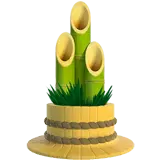 Soil
SoilThyme thrives in well-draining soil with a pH range of 6.0 to 8.0. A mix of two parts garden soil, one part coarse sand, and one-part compost or peat moss creates an ideal environment for this herb.
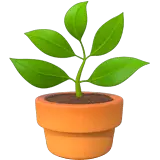 Repotting
RepottingThyme, or Thymus vulgaris, generally does not require frequent repotting and can be done every 2-3 years, or when the plant appears to be root-bound or growing slower than usual.
 Humidity & Misting
Humidity & MistingThyme prefers a dry atmosphere and tolerates low humidity levels well, making it suitable for growing in most home environments without the need for additional humidity adjustments.
 Suitable locations
Suitable locationsIndoor
Place thyme in a sunny spot and water sparingly.
Outdoor
Plant in full sun, well-drained soil; very drought tolerant.
Hardiness zone
5-9 USDA
 Life cycle
Life cycleThymus vulgaris, commonly known as common thyme, begins its life cycle when seeds germinate in the spring, usually in warm, well-drained soil. After germination, seedlings emerge and, with sufficient sunlight and water, develop into young plants with characteristic small, aromatic leaves. As the plants mature, they form woody stems and produce clusters of tiny, purplish flowers that attract pollinators, typically between late spring and early summer. Following pollination, seeds form within the flowers and, once mature, are dispersed by wind or animal activity, thus completing the reproductive cycle. Thyme plants can also spread vegetatively through rooting of stem cuttings or layering, allowing the establishment of new plants without seed production. Common thyme can live for several years, often becoming more woody and less productive with age, at which point gardeners may choose to propagate new plants to maintain a fresh supply.
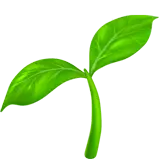 Propogation
PropogationPropogation time
Spring-Early Summer
Common thyme, known as Thymus vulgaris, can be propagated through several methods, but the most popular is by stem cuttings. This procedure is typically done in late spring or early summer, when the plant is actively growing. To propagate by cuttings, a gardener would take a 3 to 5-inch (approximately 7.5 to 12.5 cm) long stem cutting from a healthy thyme plant, making sure it has several leaves. The lower leaves are removed, and the cut end is dipped in rooting hormone to encourage root development. The cutting is then planted in well-draining soil, kept moist but not wet, and placed in a warm, bright area but out of direct sunlight to avoid scorching the delicate foliage. Roots will usually develop within two to six weeks, after which the new thyme plant can be gradually acclimatized to outdoor conditions and planted in its final location.
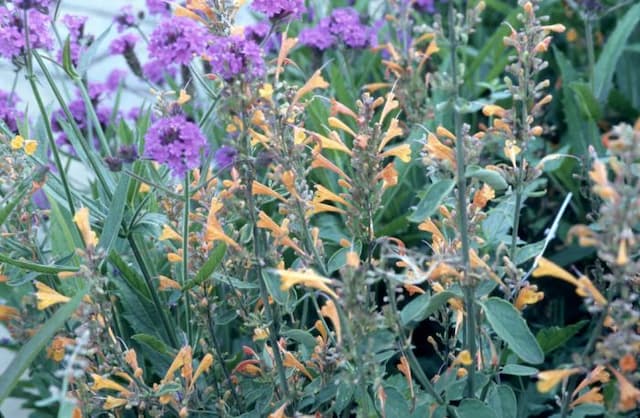
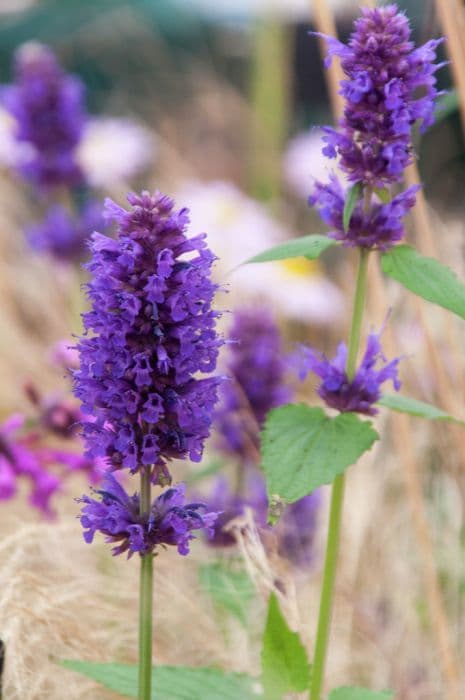
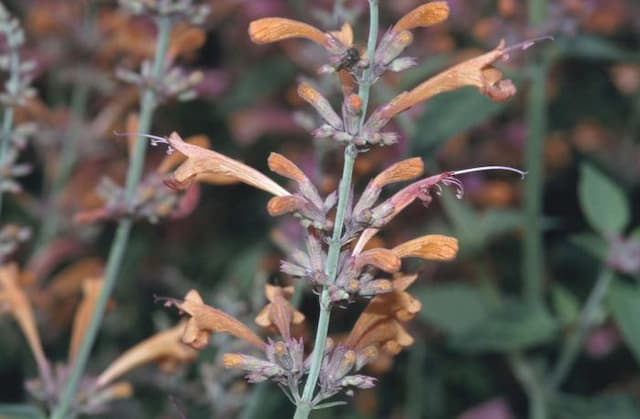
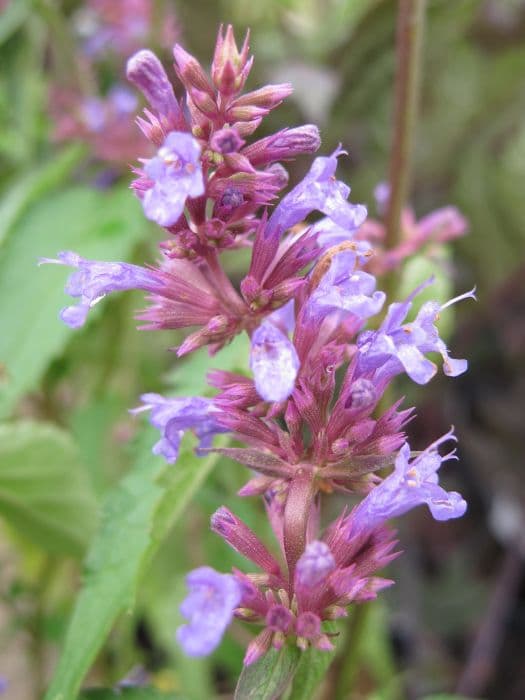



![Bugle [Black Scallop]](/_next/image?url=https%3A%2F%2Fplants-admin.emdemapps.com%2Fimages%2Fplants%2F%2Fimages%2F604b624330cd1.png&w=640&q=75)

